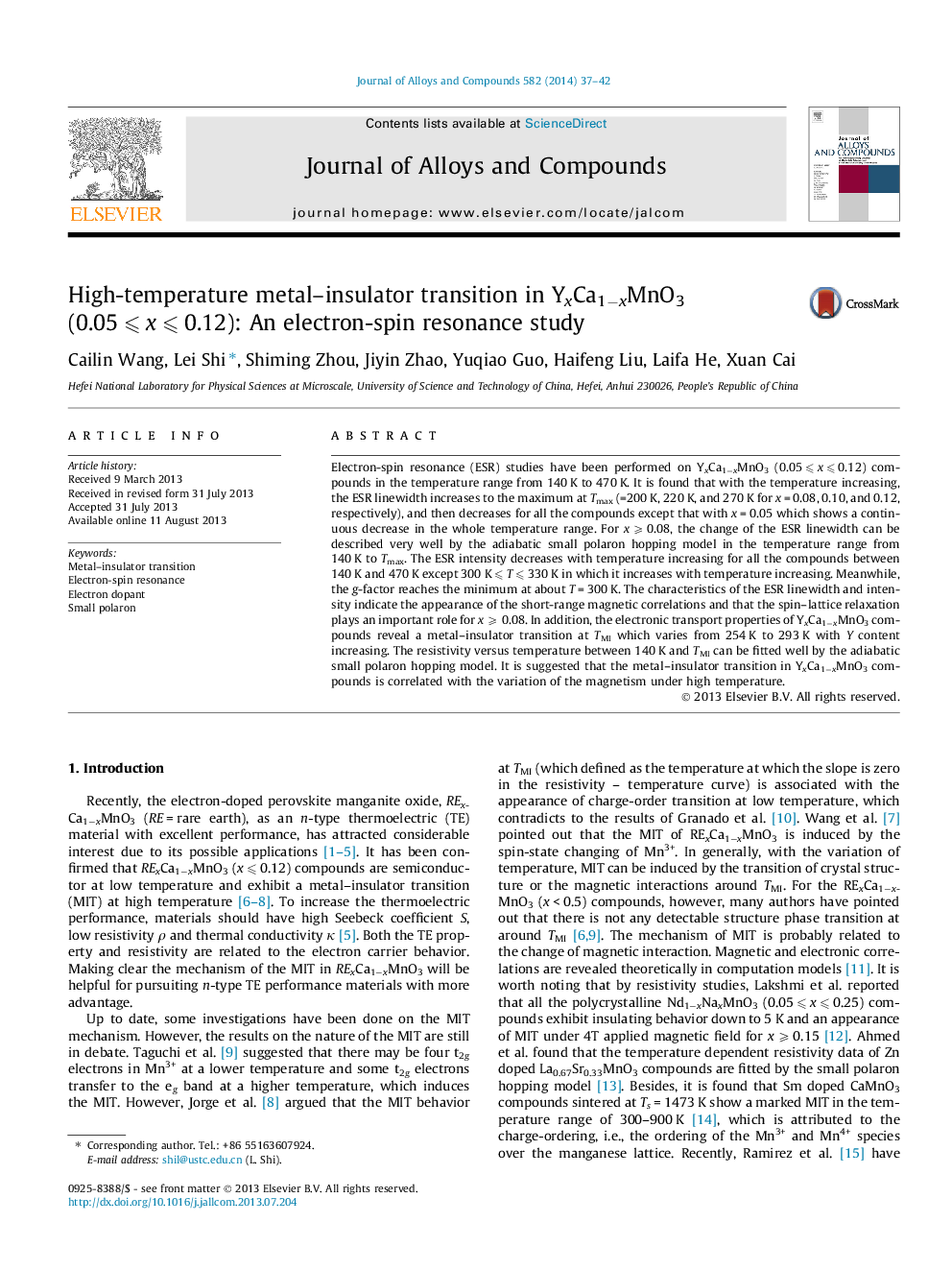| Article ID | Journal | Published Year | Pages | File Type |
|---|---|---|---|---|
| 1613051 | Journal of Alloys and Compounds | 2014 | 6 Pages |
•MIT appears in electron-doped YxCa1−xMnO3 compounds at high temperature.•ESR was employed to investigate the magnetic behaviors around the MIT temperature.•All the ESR parameters present a jumping around the MIT temperature.•The MIT is correlated with the variation of the magnetism at high temperature.
Electron-spin resonance (ESR) studies have been performed on YxCa1−xMnO3 (0.05 ⩽ x ⩽ 0.12) compounds in the temperature range from 140 K to 470 K. It is found that with the temperature increasing, the ESR linewidth increases to the maximum at Tmax (=200 K, 220 K, and 270 K for x = 0.08, 0.10, and 0.12, respectively), and then decreases for all the compounds except that with x = 0.05 which shows a continuous decrease in the whole temperature range. For x ⩾ 0.08, the change of the ESR linewidth can be described very well by the adiabatic small polaron hopping model in the temperature range from 140 K to Tmax. The ESR intensity decreases with temperature increasing for all the compounds between 140 K and 470 K except 300 K ⩽ T ⩽ 330 K in which it increases with temperature increasing. Meanwhile, the g-factor reaches the minimum at about T = 300 K. The characteristics of the ESR linewidth and intensity indicate the appearance of the short-range magnetic correlations and that the spin–lattice relaxation plays an important role for x ⩾ 0.08. In addition, the electronic transport properties of YxCa1−xMnO3 compounds reveal a metal–insulator transition at TMI which varies from 254 K to 293 K with Y content increasing. The resistivity versus temperature between 140 K and TMI can be fitted well by the adiabatic small polaron hopping model. It is suggested that the metal–insulator transition in YxCa1−xMnO3 compounds is correlated with the variation of the magnetism under high temperature.
